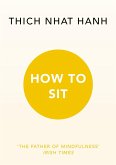Please note that the content of this book primarily consists of articles available from Wikipedia or other free sources online. The decline of Buddhism in India, the land of its birth, occurred for a variety of reasons, and happened even as it continued to flourish beyond the frontiers of India. Buddhism was established in the area of ancient Magadha and Kosala by Gautama Buddha in the 6th century BCE, in what is now modern Uttar Pradesh and Bihar. Buddhism, over the next 1500 years became the region''s dominant belief system, spreading across the Indian sub-continent. After the death of Gautama Buddha, Buddhism saw rapid expansion in its first century, especially in northern and central India. The Mauryan Emperor Ashoka and later monarchs encouraged the expansion of Buddhism into Asia through religious ambassadors. Chinese scholars traveling through the region between the 5th and 8th centuries CE, such as Faxian, Xuanzang, I-ching, Hui-sheng, and Song Yun, began to speak of a decline of the Buddhist sangha, especially in the wake of the White Hun invasion. A continuing decline occurred after the fall of the Pala dynasty in the 12th century CE, continuing with the later destruction of monasteries by Muslim conquerors.
Bitte wählen Sie Ihr Anliegen aus.
Rechnungen
Retourenschein anfordern
Bestellstatus
Storno








